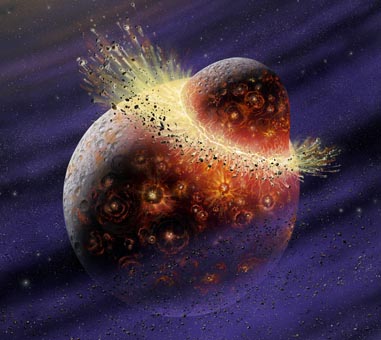
The Moon has fascinated us for centuries with several countries already having sent their probes and people to explore it But how was Earth’s closest companion formed? Well there have been many theories about the formation of the Moon. The one that many scientists agree with the most is the giant-impact hypothesis.
When Earth was hit by Theia
Scientists believe the Moon was formed when a planet about the size of Mars collided with Earth Theia, as dubbed by scientists crashed into Earth when it was still a very young planet This collision sent dunks of Earth’s cast into space Gravity then bound these particles together in space forming the Moon.
The Apollo missions conducted by NASA between 1969 and 1972. brought back over a thing of a tonne of rock and soil from the Moon. When this was analysed it was found that the Earth and the Moon hat some chemical and isotopic similarities, suggesting that they have a linked history.
However, this theory has its challenges with many models suggesting 60% of the Moon would have been made up of Theia’s rocks if the giant-impact hypothesis is true.
The other theories
Prior to the Apollo missions, there were three theories that were speculated about the formation of the Moon.
Capture theory: This suggests the Moon was a wandering body in space, like an asteroid which formed elsewhere in the solar system and was captured by Earth’s gravity when it passed near the planet.
Accretion theory: This theory suggests the Moon was created along with Earth during its formation
Fission theory: According to this theory, the Earth was spinning so fast that some of its material broke away and began to orbit it after being captured by its gravity.
Picture Credit : Google

